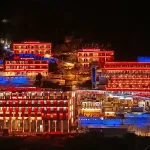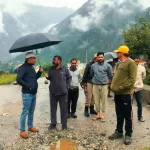The progression of the human society and the quest for overpowering nature has led to the insensitivity towards heritage and set the momentum for the vandalisation of these heritage assets.It is in this background for the larger interests of the stakeholders that is the human race and to sensitize the entire human fraternity comprising of different nations-ICOMOS(International Council on Monuments and Sites) on 18 th April 1982 resolved to observe this day (18th April) as the “ International Day on Monuments and Sites)” popularly known as “World Heritage Day.” This year’s theme for the World Heritage Day is “Discover and Experience Diversity” should develop a sense of preservation and conservation of the diversified and complex forms of heritage places like living landscapes, which are tangible carriers of the memory of a part of the human experience.It is through their authenticity and integrity that they lead to commemoration and transmission of values that includes history. This commemoration has a variety of forms like monumental sculpture,vernacular tradition,urban historic city areas,ruins whose toponymy leads to celebration of an event or individual. At the General Assembly 2023 in Sydney, the theme of “Disaster and Conflict Resilient Heritage – Preparedness, Response and Recovery” was chosen as the theme for the Triennial Scientific Plan 2024-2027. As ICOMOS develops a roadmap for capacity building for “disaster and conflict resilient heritage” for its members and the wider heritage community and gets ready to celebrate the 60th anniversary of the Venice Charter (31 May 2024), we look back on our shared inheritance from this very charter, and ahead as we ask ourselves what the pragmatic needs of heritage practice are today. The Venice Charter emerged in 1964, two decades after World War II and in an age that promised limitless progress and economic development. Six decades later, we face a climate emergency, a growing number of natural disasters as well as conflicts destroying cultural sites and displacing communities on a massive scale. “The intention in conserving and restoring monuments is to safeguard them no less as works of art than as historical evidence” (Article 3) while maintaining them on a “permanent basis” (Article 4).{Venice Charter}.The International Day for Monuments and Sites (IDMS), celebrated each year on 18 April , provides us with a unique opportunity to raise awareness of this foundational instrument which is at the core of ICOMOS’ history and identity. In this emerging discourse India in general and the Union Territory of Jammu and Kashmir (engulfed in the ethno-religious conflict) has an added significance .As our nation had to throw out the foreign yoke and this struggle involved sacrifices and valour of exalted order, which in turn lead to the creation of memorials upholding the national struggle. Jammu and Kashmir has been in the forefront of the ethno-religious conflict that has led to the competitive and conflicting interpretation of heritage as vested interests have not only altered the heritage concept but indulged in selective vandalisation of the shared assets that should have otherwise been inclusive keeping in view all the stakeholders. In such a scenario our approach towards heritage should be shaped by the following fundamental questions:
* What is happening to heritage?
* What does heritage mean to me?
* What can I do for heritage?
Answers to these questions will pave the way for devising responsible heritage conservation and marketing strategies.The heritage strategies should focus on the importance of heritage conservation and opportunities to share experiences of stakeholders. The need is to include civic bodies and municipalities for heritage conservation.This approach has worked in cities of Delhi,Bankok,Yangoon and seoul.
UT of Jammu and Kashmir should focus on the following three factors:
* Social factors.
* Politico-Economic factors.
* Planning factors.
These factors should be in tune with urban development.It will lead to comprehensive restoration and marketing of urban historic areas like Mandi Mubarak in the Jammu region of the UT, where lack of these factors in the policy premise has led to inflated costs of conservation and incompatible restoration work and exposing a premature conserved area to tourism.







